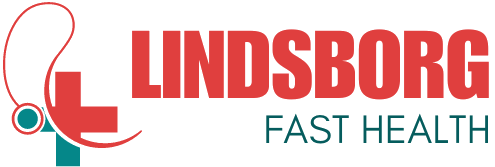Orthopedic therapies encompass a vast array of treatments and interventions aimed at addressing musculoskeletal conditions, injuries, and disorders. From non-surgical modalities to advanced surgical techniques, orthopedic care plays a pivotal role in restoring mobility, alleviating pain, and improving the overall quality of life for patients. This comprehensive guide explores the diverse landscape of orthopedic therapies, ranging from traditional methods to cutting-edge innovations.
I. Introduction to Orthopedic Therapies
Orthopedic therapies encompass a wide range of treatments designed to address issues affecting the musculoskeletal system. These therapies aim to manage conditions such as osteoarthritis, rheumatoid arthritis, fractures, sprains, and other injuries or disorders that affect bones, joints, ligaments, tendons, and muscles. The field of orthopedics has witnessed significant advancements over the years, leading to more effective and personalized treatment approaches.
II. Common Orthopedic Conditions
Osteoarthritis Osteoarthritis is a degenerative joint disease characterized by the breakdown of cartilage and underlying bone within a joint. Common symptoms include joint pain, stiffness, and swelling, which can significantly impact mobility and quality of life. Treatment options for osteoarthritis may include lifestyle modifications, physical therapy, medications, and in severe cases, surgical interventions such as joint replacement surgery.
Rheumatoid Arthritis Unlike osteoarthritis, rheumatoid arthritis is an autoimmune disorder that primarily affects the synovium, the lining of the membranes that surround the joints. This chronic inflammatory condition can lead to joint damage, deformities, and systemic complications. Therapeutic approaches for rheumatoid arthritis may include disease-modifying antirheumatic drugs (DMARDs), biologic agents, physical therapy, and lifestyle modifications.
Fractures and Sprains Fractures refer to breaks in bones, whereas sprains involve injuries to ligaments surrounding a joint. These orthopedic injuries can result from trauma, falls, sports-related activities, or repetitive stress. Treatment options for fractures and sprains depend on the severity and location of the injury and may include immobilization, physical therapy, and, in some cases, surgical intervention to realign bones or repair damaged ligaments.

III. Diagnostic Procedures in Orthopedics
X-rays X-rays are commonly used diagnostic imaging tools in orthopedics to visualize bones and detect fractures, dislocations, and degenerative changes. These images provide valuable information about the structure and integrity of the skeletal system, guiding treatment decisions and monitoring disease progression.
MRI (Magnetic Resonance Imaging) MRI utilizes magnetic fields and radio waves to generate detailed images of soft tissues, including muscles, ligaments, tendons, and cartilage. This imaging modality is particularly useful for evaluating joint injuries, spinal disorders, and soft tissue abnormalities, offering superior contrast resolution compared to traditional X-rays.
CT Scans (Computed Tomography) CT scans combine X-ray technology with computer processing to create cross-sectional images of the body. In orthopedics, CT scans are often used to assess complex fractures, bone tumors, and spinal conditions, providing detailed anatomical information for surgical planning and treatment evaluation.
IV. Non-Surgical Orthopedic Therapies
Physical Therapy Physical therapy plays a crucial role in orthopedic rehabilitation by focusing on restoring movement, strength, flexibility, and function. Treatment modalities may include exercises, manual therapy techniques, electrotherapy, and patient education. Physical therapists work closely with patients to develop customized treatment plans tailored to their specific needs and goals.
Orthotics and Prosthetics Orthotics are custom-designed devices such as braces, splints, and shoe inserts that provide support, alignment, and protection for injured or weakened joints. Prosthetics, on the other hand, are artificial limbs designed to replace missing body parts, restoring mobility and function for individuals with limb loss or limb deficiency.
Pain Management Techniques Pain management strategies for orthopedic conditions may include medications, injections, and complementary therapies such as acupuncture, chiropractic care, or massage therapy. These approaches aim to alleviate pain, reduce inflammation, and improve overall comfort and well-being for patients.
V. Surgical Orthopedic Interventions
Arthroscopic Surgery Arthroscopic surgery is a minimally invasive technique that allows orthopedic surgeons to visualize, diagnose, and treat joint problems using small incisions and specialized instruments. This approach is commonly used for procedures such as meniscal repair, ligament reconstruction, and cartilage restoration, offering benefits such as reduced pain, faster recovery, and improved outcomes.
